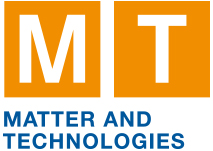Speaker
Description
Quantum generative models offer a promising approach for simulating complex phenomena in particle physics. The successful small prototype for calorimeter images with 8 qubits for 8 pixels is the Quantum Angle Generator (QAG), a variational quantum model trained with a Maximum Mean Discrepancy (MMD) loss to generate images from the probabilistic outputs of quantum circuits for calorimeter showers at the High-Luminosity LHC. The QAG can adapt through learning to hardware-induced noise, yielding stable, high-quality outputs with a factor of 20 less parameters than a comparable hybrid GAN.
Two new approaches to scale up to a larger number of pixels have been developed. One approach uses linear combinations of observables per pixel and succeeds with 6 qubits to generate signals in 25 pixels. The second new approach employs adaptive quantum polynomial chaos expansion with a Hermite basis generator and achieves with 13 qubits to generate images with 4096 pixels.
| Speed talk: | Normal speed talk selection |
|---|

